Kampot to Phnom Penh
With our stay coming to an end in Kampot, it was time to travel to Phnom Penh.
Once again we booked with Giant Ibis. This is the same bus company we used to get from Siam Reap to Kampot overnight. It cost us $16us/$21nz for two of us. The trip was to be 2.5 hours long but ended up being 4 hours before we managed to pull into Phnom Penh.
Hotel was not far from bus depot so the Tuk Tuk only cost us $2us.
Accommodation
We stayed at Point Boutique Hotel and cost it cost us $35us/47nz per night including breakfast.
It was in a great location, close to the river. There is a definite Red Light district with plenty of ‘girlie bars’ which we were surrounded by. However, turn in the opposite direction and we were only a few meters walk to the river esplanade.
This is certainly the location to be close to. It is a great area night and day with families and tourists, all enjoying the riverside walk. Although we seem to be on the fringes of the bars and nightclubs our hotel room was quiet.
We did upgrade to a room with a window but it really wasn’t worth the extra money. Window looked out onto the block wall of the building beside us. A big bonus was a great rooftop bar. Good for photos but not drinks – way too expensive as they were more than twice the price of a beer or cocktail down the road.
Click on the link below to view a video on our highlights in Phnom Penh.
On our walkabout, we kept an eye on all the tuk tuk drivers so see if we could find one who spoke good English and had a personality. One driver stopped us (actually one of many) and seemed to fit the criteria. We bartered with him for a full day hire to take us to S21 and the Killing Fields. The agreed price was 6 hours for $25us/$34nz. This was a fair price for him to run us around and wait for us to finish at each site.
S21 and Killing Fields
This is particularly hard to write about. We’ve thought a lot about just how much to show and tell on this area of Phnom Penh. It is difficult to understand just how this could have happened. How ugly the truth is and what went on in the country during our generation.
We don’t consider it to be glorifying the horrors, rather than to keep the story alive so that it may in some way stop it from happening again. Hopefully the world has learnt that just turning your back on the problem doesn’t make it go away.
The more visitors that tell about their visit to these two sites, then in a way more people may know what went on. There are hundreds of websites and documentarys dedicated to telling this story. Ours is more of our personal journey through S21 and the Killing Fields and what touched us the most.
Tuol Sleng Genocide Museum (formerly S-21 Prison)
The site of S-21 (click on link if you want to learn more) is set in a non-remarkable district on the outskirts of Phenom Phen. It was formerly Tuol Sleng High School, a place of learning and enjoyment. What it turned into was so far from its original purpose it is beyond belief.
In 1976, the Khmer Rouge renamed the high school S-21 and turned it into a torture, interrogation and execution centre. Their record keeping was meticulous. They carefully recorded the prisoners’ interrogations. Prisioners were repeatedly tortured and coerced into naming family members and close associates, who were in turn arrested, tortured and killed.
They also carefully photographed most of the inmates which are now on display and makes for the most haunting portraits. Each of the 6,000 images all have a look of shock, resignation and horror. No one was spared, elderly, men, women, children and babies.
The Grounds
Today it looks like it could be any high school. Five buildings facing a grassed courtyard. The ground-floor classrooms in one building have been left as they were in 1977. This is where the interrogations took place. Only containing a steel bed frame with shackles at each end, a school desk and chair.
Photos on the wall finish off the story. There are grisly photographs of bloated and decomposing bodies chained to these bed frames. Most with pools of wet blood underneath.
The site was first discovered by two Vietnamese journalists in January 1979 and this is the sight that greeted them. They were the ones who first managed to record the terrible atrocities and get the story out.
The Prisoners
The vast majority of victims were Cambodian. Some foreigners also got caught in the net. A total of 79 are on record. One of those foreigners was a New Zealander – Kerry Hamill.
He was the older brother of Rob Hamill (the rower). Kerry was captured, imprisoned and killed by the Khmer Rouge in 1978. He was fulfilling his lifetime dream of sailing around the world. His only mistake was straying into Cambodian waters.
We listened on our headsets to Rob Hamill’s testimony in court against one of the leaders of the Khmer Rouge. It was very emotional to listen to him speak of his brother’s captivity, Kerry’s forced confessions and his eventual death.
The Eleven Graves
Thousands upon thousands of people perished at S-21 yet there are only eleven graves that stand in the courtyard. These are the graves of the eleven corpses found by those that captured the camp. The mutilated bodies were still chained to beds, killed by their fleeing captors only hours before the prison was discovered.
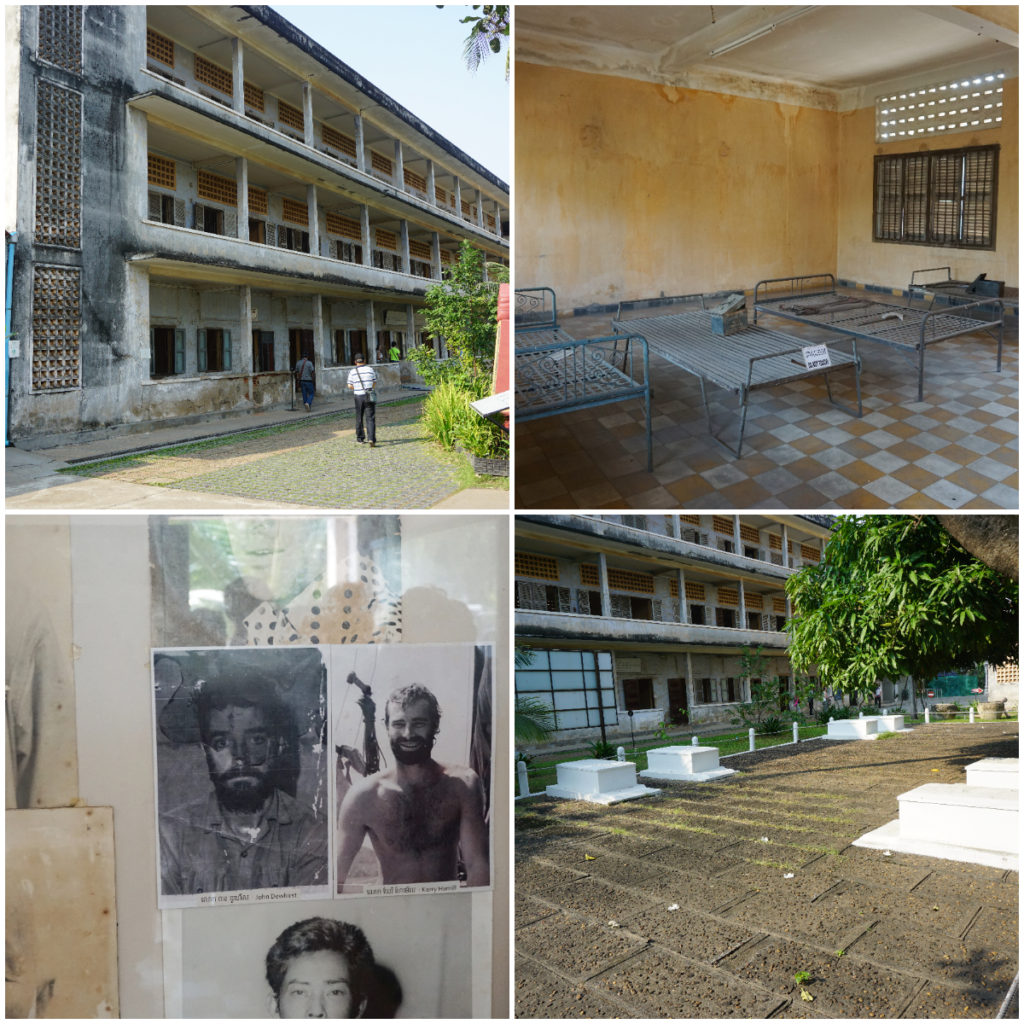
the buildings as they were in the 70’s, the metal beds with shackles, Kerry Hamill’s photo’s and the eleven graves
Facts
- Of the 17,000 people known to have entered between 1975 to 1979, only seven survived.
- The prison held between 1,000-1,500 prisoners at any one time
- Prisoners were held in large mass cells and shackled to a long iron bar
- No one was supposed to die here, that was to be carried out at the Killing Fields – but many didn’t survive to make that trip
The Killing Fields
After spending a couple of sombre hours at S-21, we found our Tuk Tuk driver and started on our 14km journey out of Phnom Penh to the Killing Fields.
Choeung Ek is one of the thousands of other such sites around the country where the Khmer Rouge practised genocide during the late 1970s.
Between 1975 and 1979, 1.7 million Cambodians are believed to have lost their lives. For a such a small country, that created an effect that lasts to this day. Almost one in five people living in Cambodia at the time is believed to have died as a result of the Cambodian genocide.
The sites where people were killed and buried became known as Cambodia’s “killing fields.” Those being killed were often hit over the head with clubs in a bid to save bullets.
A soccer-field-sized area surrounded by farmland, the killing fields contain mass graves, slightly sunken, for perhaps 20,000 Cambodians, many of whom were tortured before being killed. The bordering trees held nooses for hangings.
The Grounds
The area was surprisingly small. We donned our headsets and went from site to site silently listening to the commentary and the stories surrounding each grisly site.
All the other visitors were also concentrating on what they were listening to on their headsets as well. This meant that the entire area was extremely silent. No one was talking or discussing what they were listening to. This made it even eerier and seem quite surreal. The atmosphere would be best described as ‘heavy’ as everyone slowly made their way around.
One mass grave was particularly heart wrenching for me. This was the area where all the women with babies were brought and murdered. Their babies taken from them and also being killed – commonly by using the trunk of a large nearby tree. This tree has now been turned into a shrine, dedicated to the memory of these mothers and babies who died so needlessly and horrifically.
The last site we visited was the seven-story marble building which houses the bones and skulls of the victims that have been excavated so far. There are still so many people buried here that haven’t been excavated yet. Usually, after heavy rain, there are more bones and clothing that come to the surface from the erosion.
The skulls are packed in by the thousands on wooden shelves. Men, women, children and babies.
We hope that their atrocious deaths last in remembrance.
Click on the link below to view a video of our time at S-21 and the Killing Fields. Please note that some scenes may be disturbing.
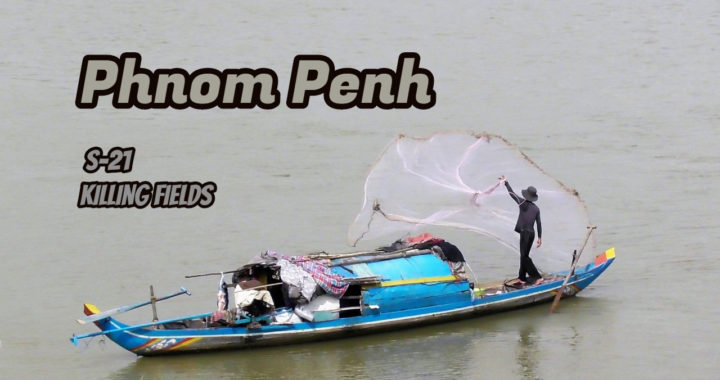
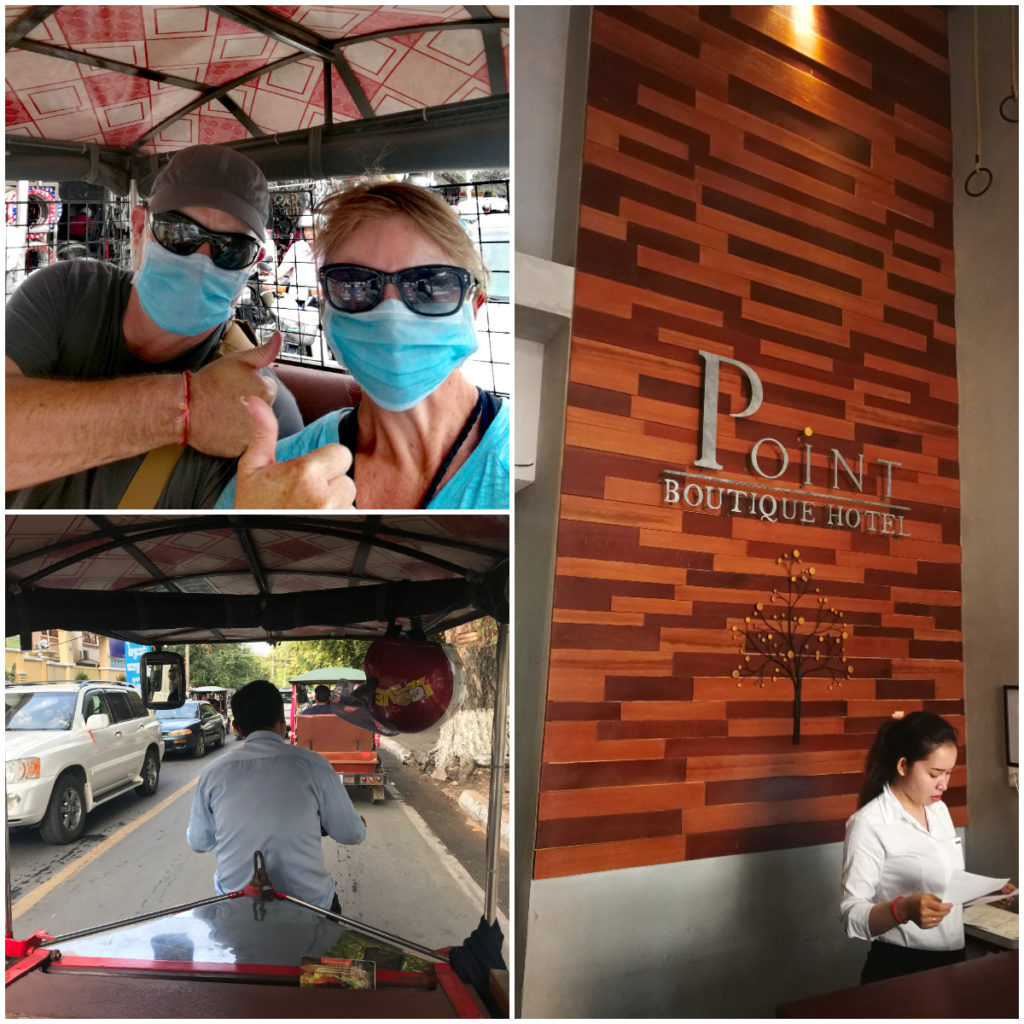
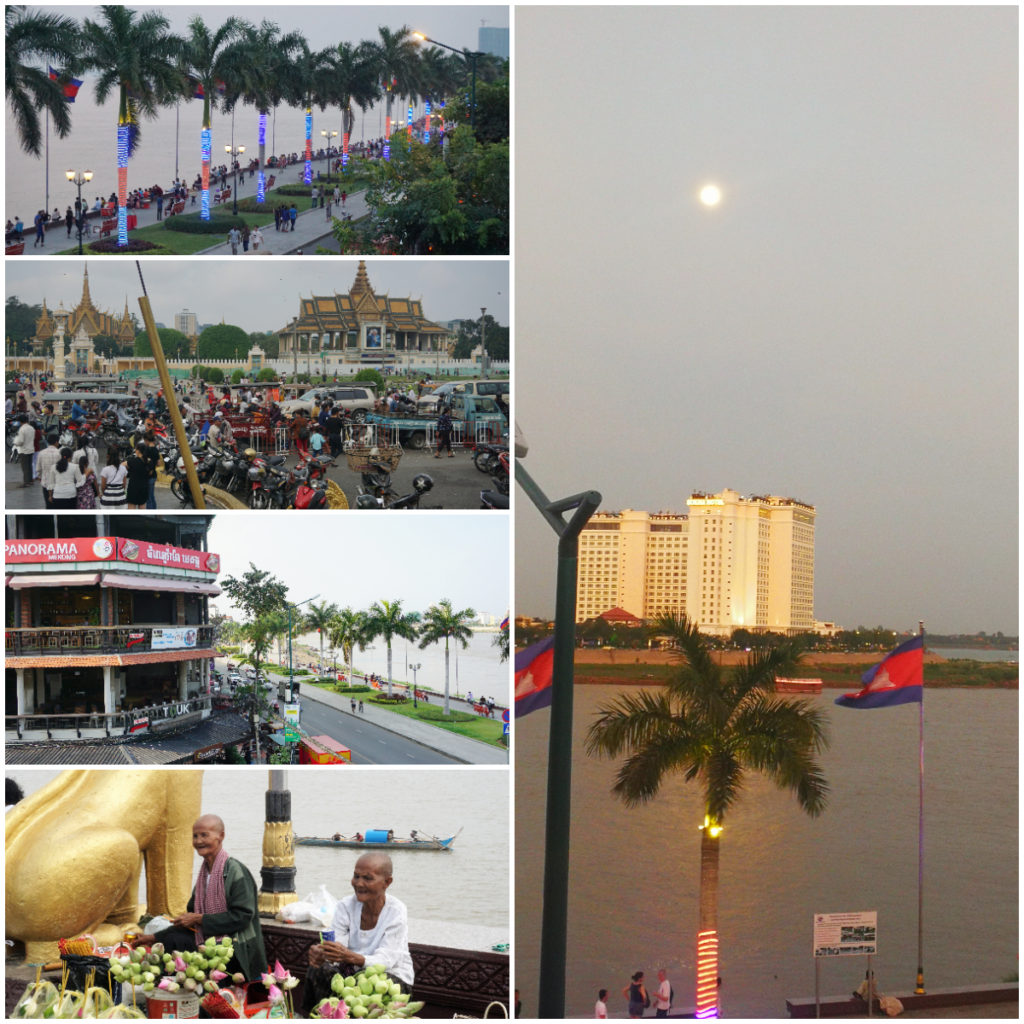
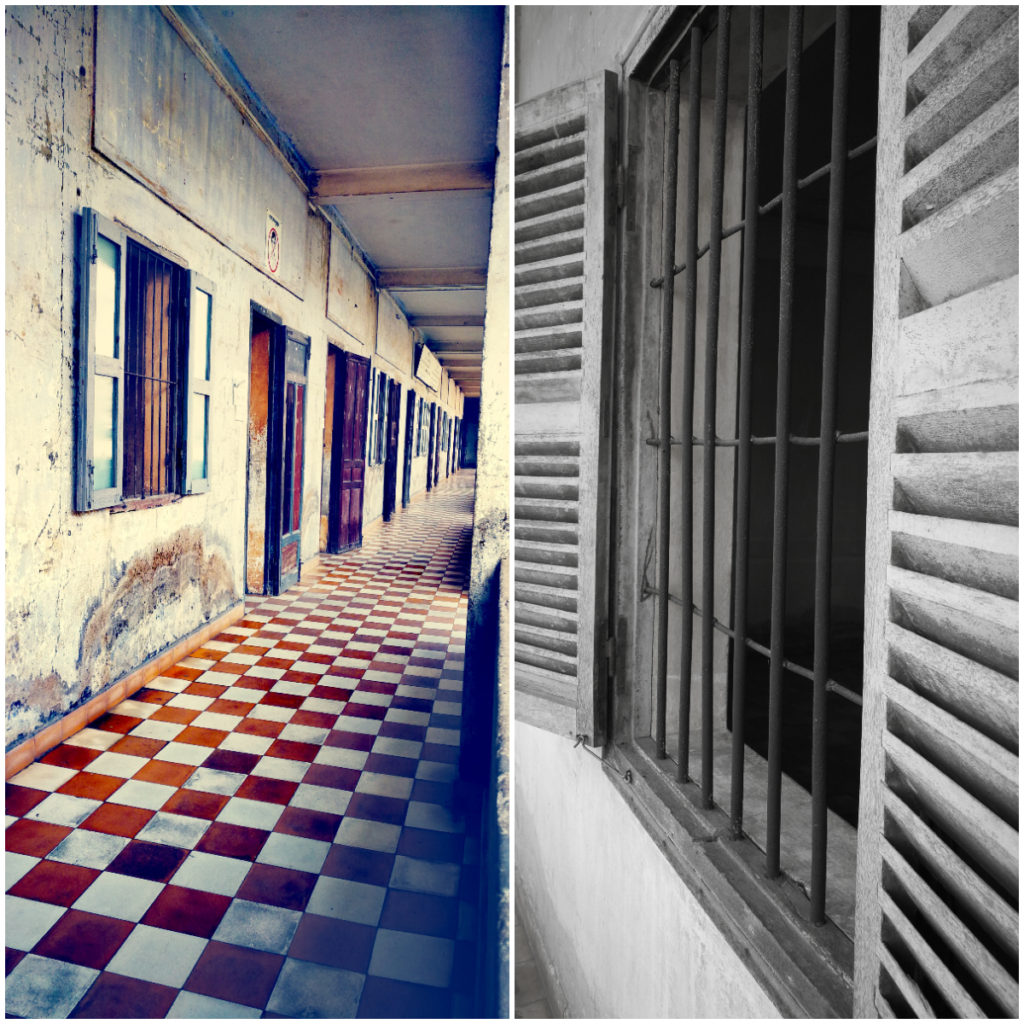
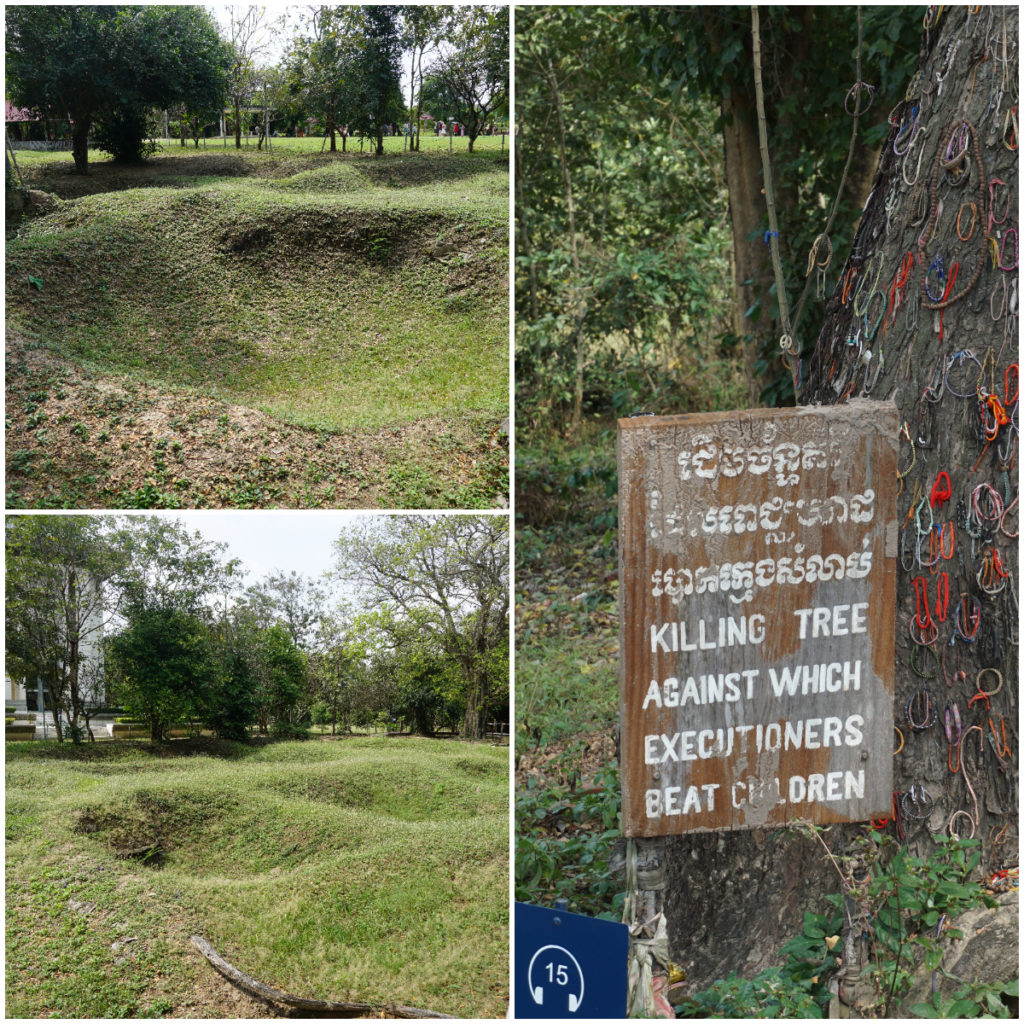
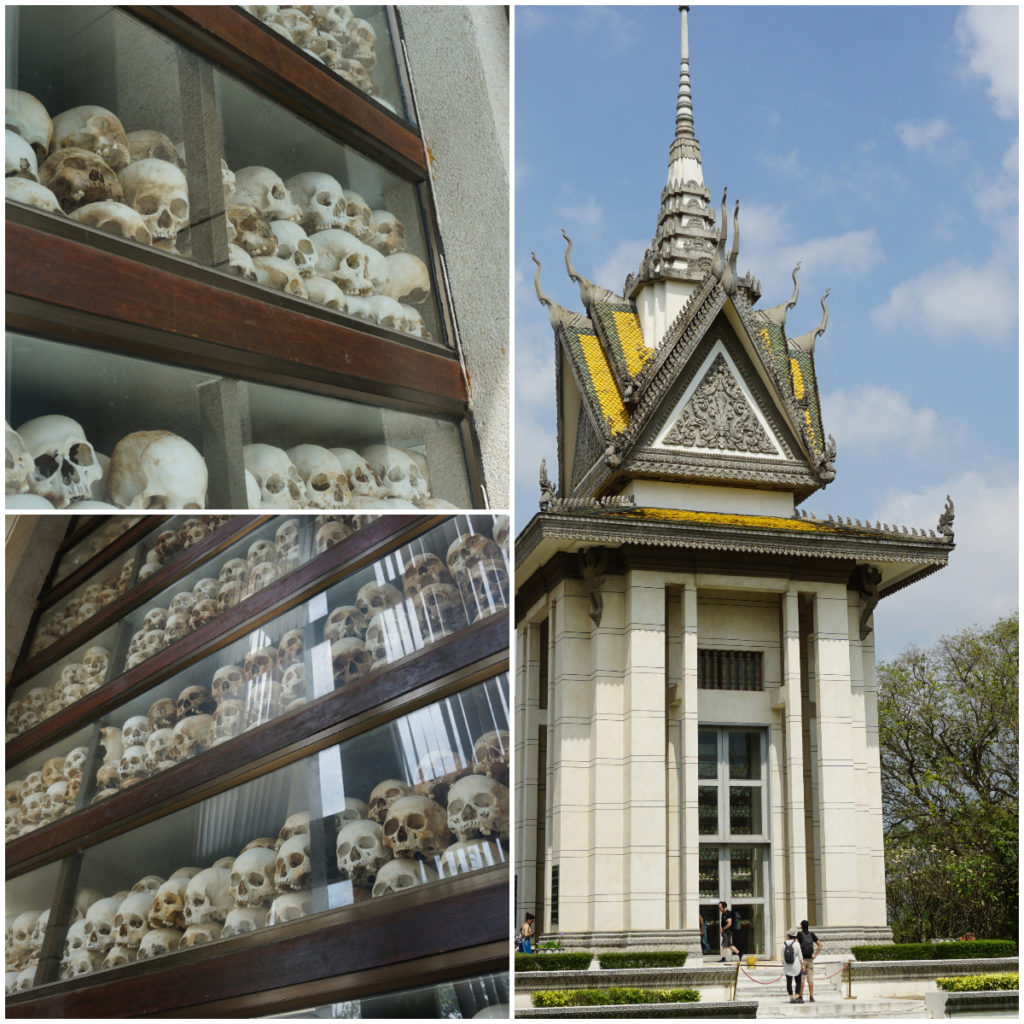
Yes it is a shame that this happened in our lifetimes and that the people of this country suffered so much as a result of skewed ideology.
Your account brings back to me the shock and horror we felt as we visited these sites.
Sadly there are many more similar sites throughout Cambodia and we only had an opportunity to visit a few…
Thanks for sharing your experiences in these places. Sounds like you did very well with your Hotel. Apart from S21 & the Killing Fields we loved the vibrancy of Phnom Penh amd we would gladly return there one day to explore further
Thanks for your feedback guys. We too have unfinished business in Cambodia and feel that there is so much more to see.